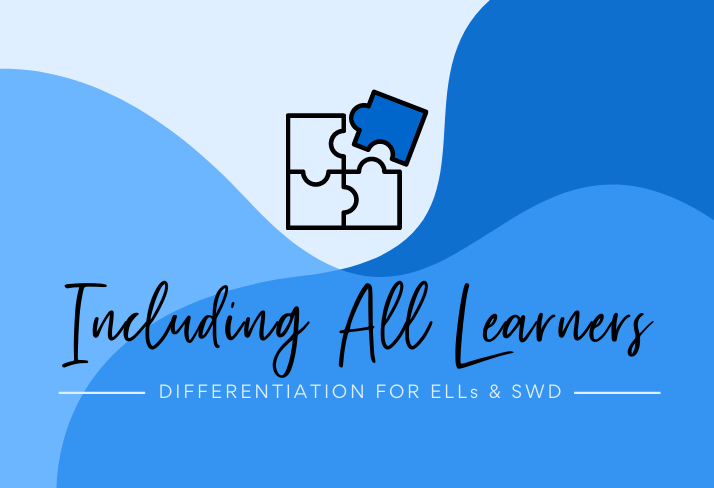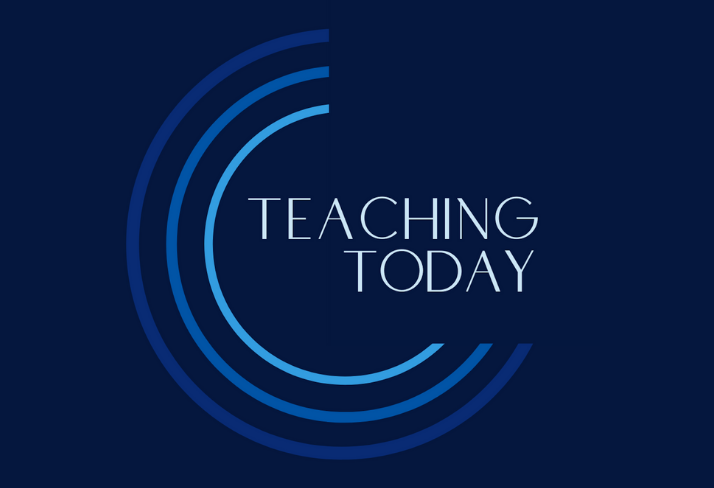|
Three strategies you can offer students of all levels — even when you can only connect virtually.
What happens when your class is full of 30+ students who have different strengths, different learning styles, and different comfort levels with the English language? We’ve been tackling this question alongside K-12 educators through PD series like Educating ELLs and Including All Learners, where we address the promises and challenges of teaching in heterogeneous classrooms by exploring the principles of differentiation and related research for classroom applications.
When we began another round of Including All Learners sessions last year, we set out to support a new group of educators as they worked toward their differentiation goals. We didn't yet know that we would soon experience social distancing, that toilet paper would become the most coveted household item, or that both teaching and learning would rapidly transition from in-person to online. During this time of online schooling, we are particularly concerned about students who either do not have online access, or do not have a quiet nook in their homes to learn. A few years ago, one of our students commented that he slept with the English novels from our class under his pillow — it was the safest place in his home, where he didn’t have a workspace of his own. As we write this from our individual homes and reflect on the recent shift to virtual education, we are focusing on the principles of our Including All Learners series that remain true in any kind of teaching and learning environment. Below, we will outline a few concepts from our workshops and share how they carry over to our online learning experiences. Disrupt the single story We begin our sessions with Chimamanda Ngozi Adichie’s TED Talk, The Danger of a Single Story. She explains to her audience how all of us, including Adichie herself, have told a singular version of someone’s life story, and have also been victim to a single story about ourselves. She shares how damaging and incorrect these single versions can be. This concept serves as a reminder that we must disrupt the single stories that are often assigned to our students, particularly those who are ENLs or are students with disabilities. This can be more challenging than it sounds, particularly when students have to be described in IEPs, which do not allow for a more complex telling of their life stories. In our workshops, we challenge ourselves and participating teachers to share other versions of our students’ stories — something you can continue to do in online communication with other adults in your community.
What helps some students can help all
One of the principles of Universal Design for Learning (UDL) is that what helps some learners can help all learners. This concept can be illustrated by the design of public spaces — for example, people of all ages and abilities benefit from public bathrooms that are wheelchair accessible; they are wider, are often designed without entry doors, and are therefore easier to navigate and offer fewer opportunities for spreading germs. One way we try to illustrate this concept in our workshops is by providing all participants with tools that support their learning. For example, while we view the Adichie TED Talk, we offer our participants a simple graphic organizer (like a double entry journal) that allows everyone to listen fully, while also allowing them to recall specific compelling moments in the talk. Our double entry journal includes two components: a column on the left, partially filled out with quotes from the text (in this case, the TED Talk), and a column on the right, which is open for viewers to share their thoughts. Returning to the ideas presented in UDL, a double entry journal that includes specific lines from the text is useful for students who have central executive challenges, but in reality, everyone can benefit from the text references. The principles of UDL feel particularly important at a time when it is more difficult to ask students where and how they need support. Just as we provided a partially completed double entry journal for all of our participants, consider making your scaffolds accessible to all students on your online platforms. This might look like providing possible sentence starters to all students for written explanations, or providing a series of clues for students solving a math problem.
Show the messiness of thinking
Metacognition expert Dr. Saundra McGuire defines metacognition as simply thinking about your thinking. Being able to think about how you’re making meaning of a piece of writing — as well what you can easily understand and what you can’t — is an important aspect of engaging with complex texts. One tool we offer educators is a model of a think aloud, where we simply model the messiness of the thinking that goes into making sense of our reading, writing, and problem-solving. The goal is to dispel the idea that a text suddenly and magically makes sense without struggle and hard work, and to show them that everyone relies on thinking moves that help them chip away at difficult texts. Consider doing this type of think aloud with your students online — either in real time or as a short recorded video. Rather than simply creating a video where you explain the major steps needed for answering a question or solving a problem, try to capture yourself actually doing the work, making even your smallest thinking moves visible — the questioning, rereading, reasoning, and revising that often happens while engaging in higher-order tasks, but that we often do without even realizing. You might also share things like how you knew to begin your answer in a certain way, or what bit of information caused you to stop and double-check your computations. Sharing these micro thinking steps will help students see that there is not a singular way to answer a question or to solve a problem, which may help them become more aware of their own thinking.
As you continue adapting your instruction for remote and blended learning, we hope you will utilize the tools and concepts we have outlined here to ensure you are reaching all learners. While our in-person sessions are on hold, you can continue to participate in professional development on this topic by joining us online.
|
|
The Center for Professional Education of Teachers (CPET) at Teachers College, Columbia University is committed to making excellent and equitable education accessible worldwide. CPET unites theory and practice to promote transformational change. We design innovative projects, cultivate sustainable partnerships, and conduct research through direct and online services to youth and educators. Grounded in adult learning theories, our six core principles structure our customized approach and expand the capacities of educators around the world.
|
ABOUT US
525 West 120th Street, Box 182 New York, NY 10027 416 Zankel Ph: (212) 678-3161 [email protected] Our Team Career Opportunities |
RESOURCES
Professional Articles Ready-to-Use Resources Teaching Today Podcast Upcoming PD Opportunities |
COACHING SERVICES
Custom Coaching Global Learning Alliance Literacy Unbound New Teacher Network Student Press Initiative |

























